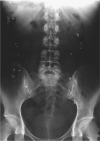Behavioural and new pharmacological treatments for constipation: getting the balance right
- PMID: 20801775
- PMCID: PMC3189401
- DOI: 10.1136/gut.2009.199653
Behavioural and new pharmacological treatments for constipation: getting the balance right
Abstract
Chronic constipation affects almost one in six adults and is even more frequent in the elderly. In the vast majority of patients, there is no obstructive mucosal or structural cause for constipation and, after excluding relatively rare systemic diseases (commonest of which is hypothyroidism), the differential diagnosis is quickly narrowed down to three processes: evacuation disorder of the spastic (pelvic floor dyssynergia, anismus) or flaccid (descending perineum syndrome) varieties, and normal or slow transit constipation. Treatment of chronic constipation based on identifying the underlying pathophysiology is generally successful with targeted therapy. The aims of this review are to discuss targeted therapy for chronic constipation: behavioural treatment for outlet dysfunction and pharmacological treatment for constipation not associated with outlet dysfunction. In particular, we shall review the evidence that behavioural treatment works for evacuation disorders, describe the new treatment options for constipation not associated with evacuation disorder, and demonstrate how 'targeting therapy' to the underlying diagnosis results in a balanced approach to patients with these common disorders.
Figures




References
-
- Lembo T, Camilleri M. Chronic constipation. N Engl J Med. 2003;349:1360–8. - PubMed
-
- Minguez M, Herreros B, Sanchiz V, et al. Predictive value of the balloon expulsion test for excluding the diagnosis of pelvic floor dyssynergia in constipation. Gastroenterology. 2004;126:57–62. - PubMed
-
- Locke GR, III, Pemberton JH, Phillips SF. American Gastroenterological Association Medical Position Statement guidelines on constipation. Gastroenterology. 2000;119:1761–6. - PubMed
-
- Metcalf AM, Phillips SF, Zinsmeister AR, et al. Simplified assessment of segmental colonic transit. Gastroenterology. 1987;92:40–7. - PubMed
Publication types
MeSH terms
Substances
Grants and funding
LinkOut - more resources
Full Text Sources
Medical
